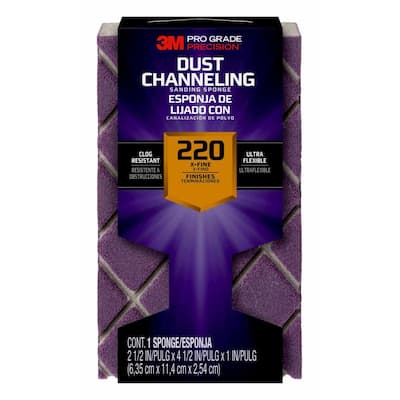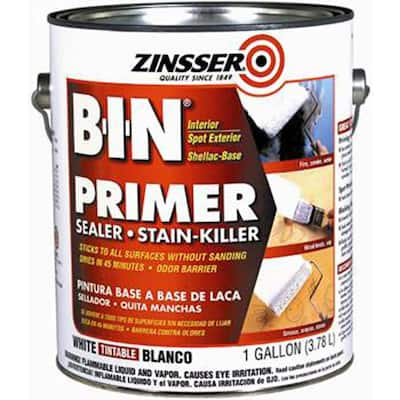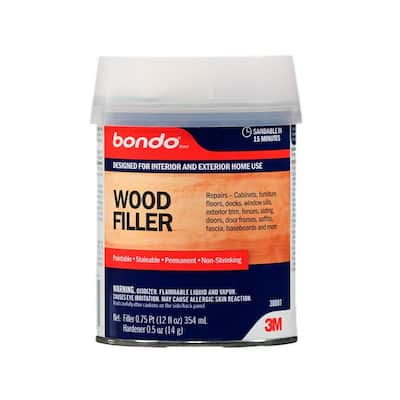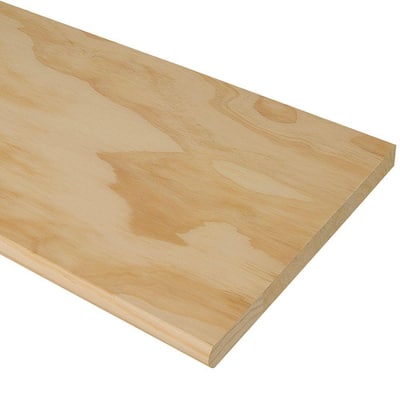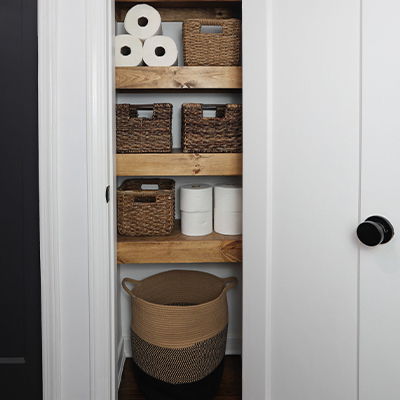Attic Stairs Tread Repair
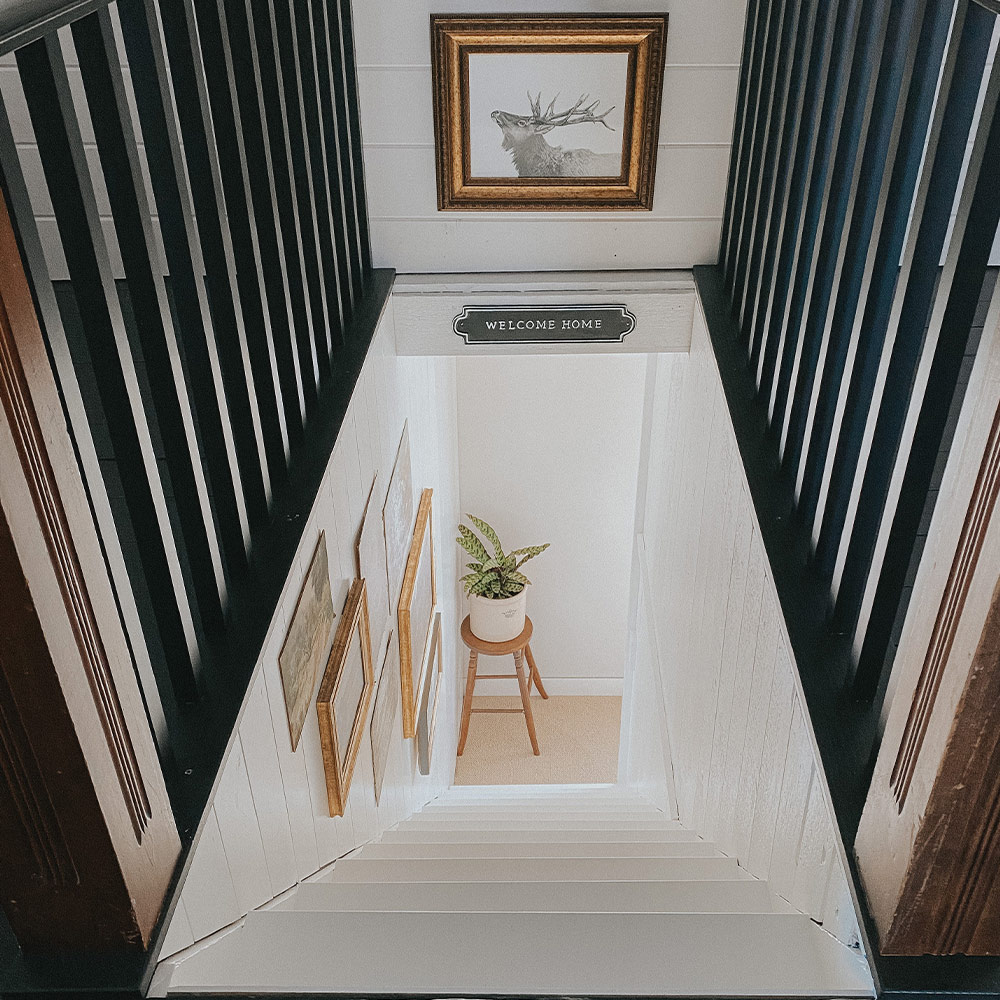
Last updated August 21, 2024

Hi, I'm Raftyn you can find me on Instagram @RignellRanch! I am a content creator in the home design & DIY niche, with a sprinkle of lifestyle and a huge splash of FUN! Together with my handy husband, we are renovating our 1880s farmhouse and recently embarked on a new adventure, a cabin on the lake! We love updating our old home and are not afraid of a good fixer upper. Be sure to follow along as we create the home and cabin of our dreams, one DIY project at a time.
A Note From The Home Depot
Give your staircase a refresh with this satisfying DIY stair tread repair project. Follow along as Raftyn Rignell of Rignell Ranch transforms her attic stairs and instantly brightens up her space.
Table of Contents
Attic Stairs Tread Repair
Step 1
Step 2
Step 3
Step 4
Attic Stairs Tread Repair
Our home was built in the 1880s, and like our home, the stairs going to the attic are very old. Not only are the stairs very narrow and steep, but over time, the treads have been worn down and many of them are broken. They are also very loud and squeaky when walking up and down.
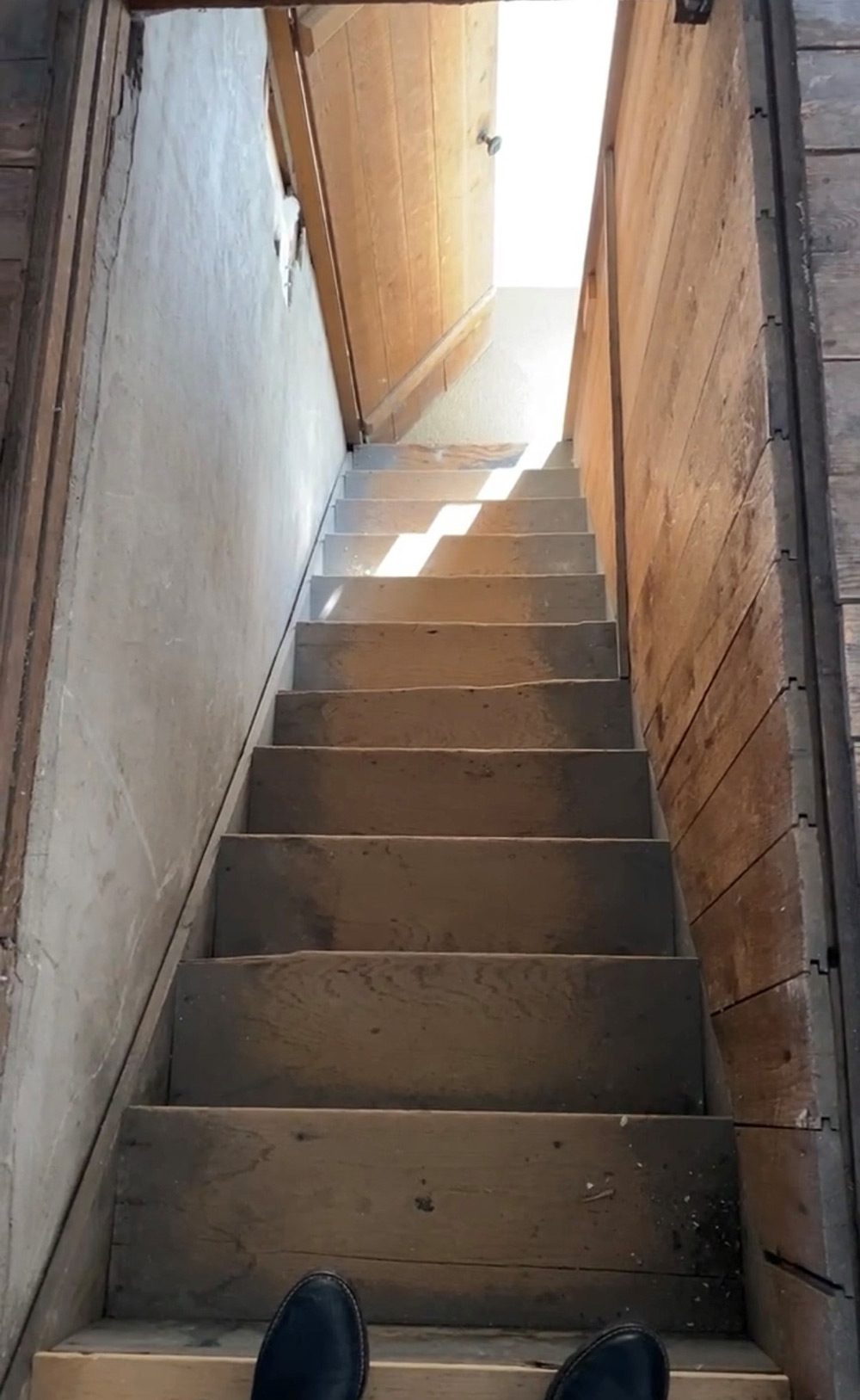
Step 1
We started this stair project by adding some white smooth nickel gap shiplap from The Home Depot to the right side of the stairway. The addition of this shiplap mimicked the wood that was originally on the left side of the stairway. Adding the new shiplap and painting the existing wood shiplap has really helped tie the two sides together.

Since finishing our attic remodel, our family has been enjoying this new space in our home so much! Having the kids going up and down so often, it was time to make the stairs more safe and secure. We bought these unfinished plain cut pine stair treads from The Home Depot. Since I have always planned on painting the stairs, I decided to use unfinished pine stair treads, which are very budget friendly. However, if you were doing this project and wanted to stain your treads, The Home Depot has a beautiful oak option, too.
First, we cut each stair treads down to size, then secured them to each existing riser using finishing screws. I couldn’t believe how sturdy they already felt when installed;
we should have done this a long time ago! Now time for primer and paint.
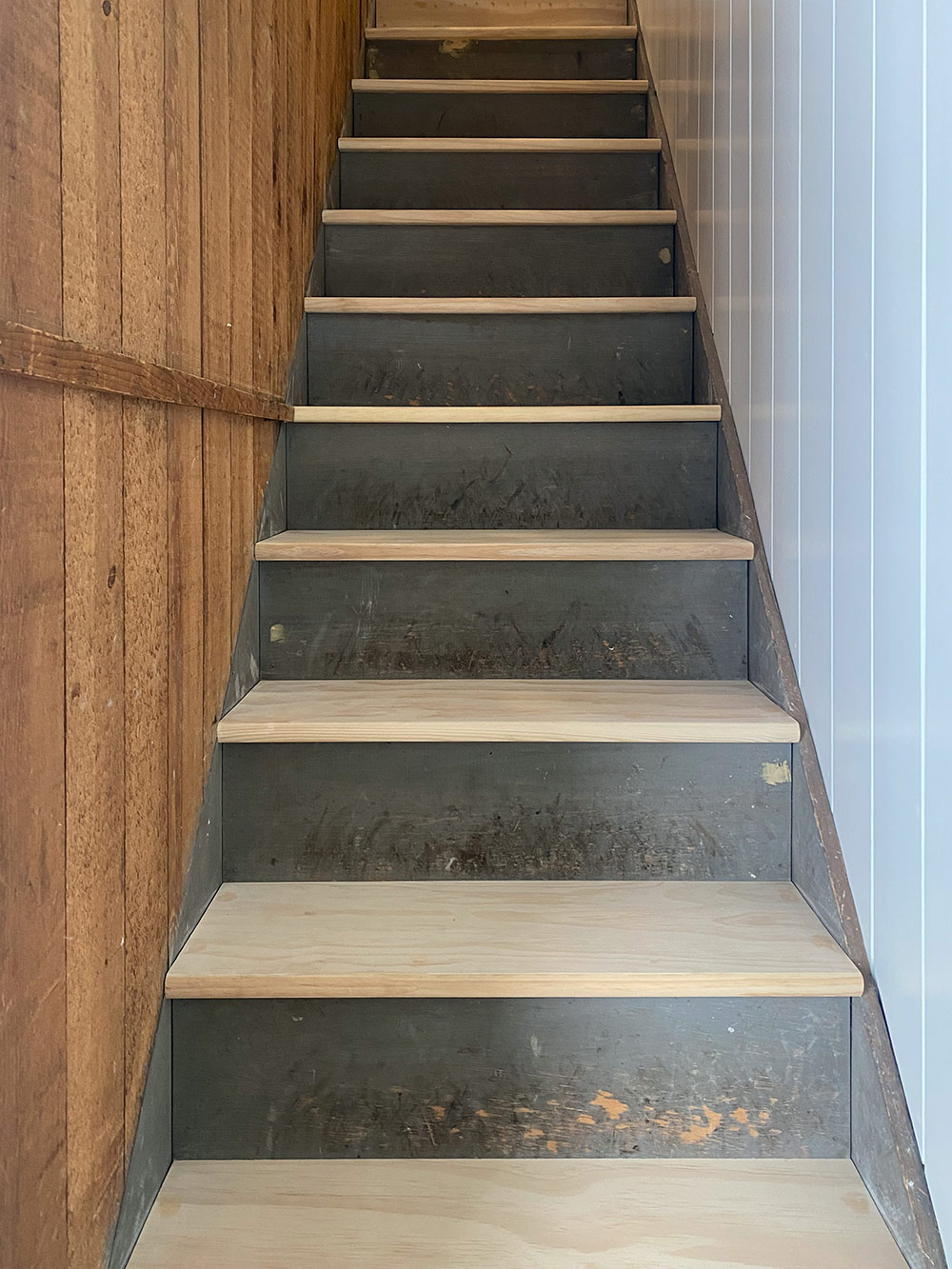
Step 2
Using wood filler, I filled all the screw holes, then sanded them smooth so they will completely disappear after I apply the paint. We used Zinsser BIN primer to prime the entire staircase and the wood wall on the left side. Once the primer was dry, I took a 220 grit sanding block to smooth out the grain of the wood on the new stair treads. When bare wood is primed, the grain of the wood will raise, leaving it feeling very rough. It is always helpful to feel along with your hand when sanding. You’ll be able to feel where the grain has raised from the primer and how smooth it gets after a few passes with the sanding block. Once sanded, be sure to vacuum and wipe down the areas where you sanded before adding paint.
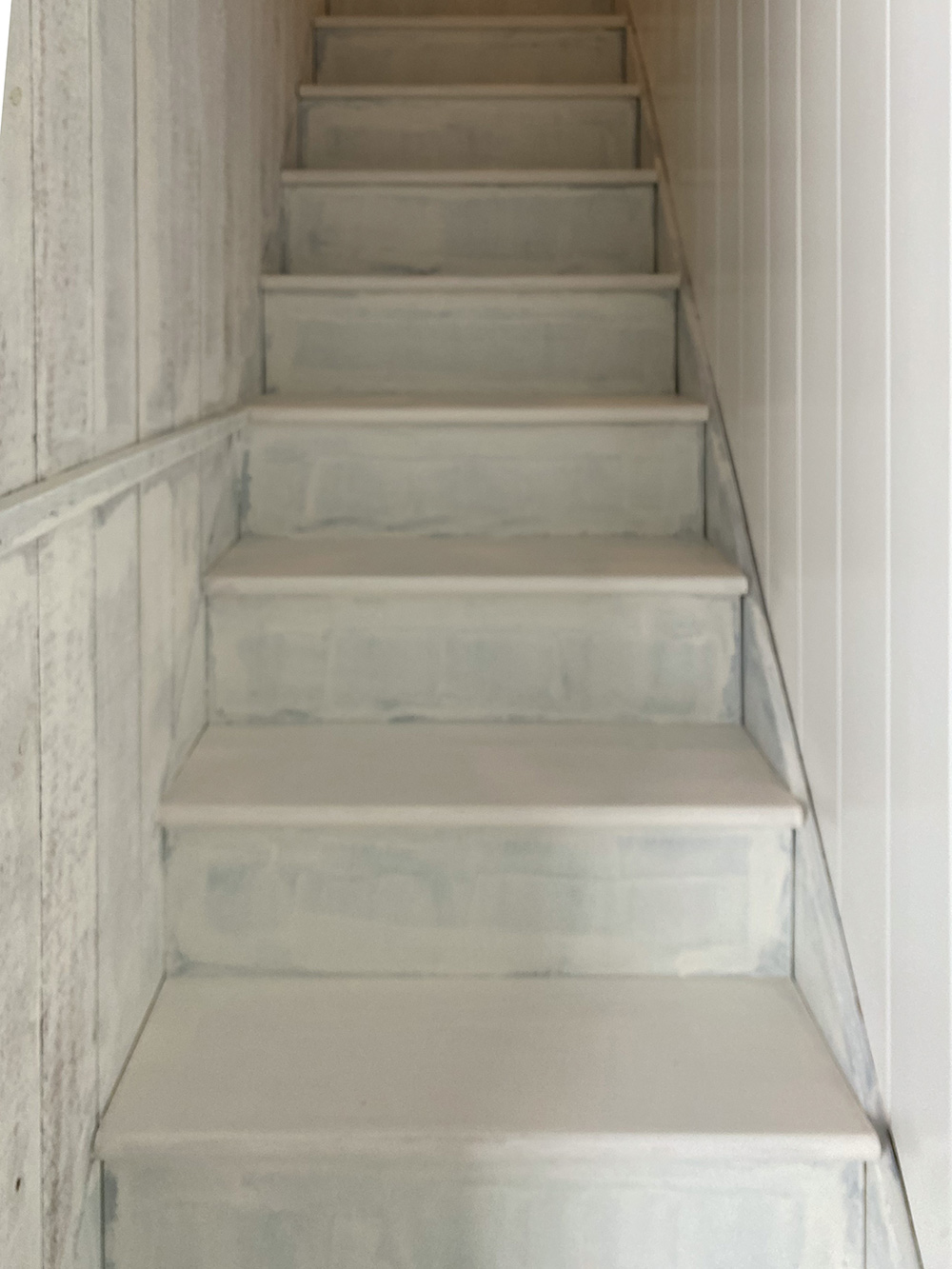
Step 3
I originally wanted to paint the stairs black like the floor in the attic, but after seeing how bright and airy just the primer looked, I knew white was the right choice. Another reason I went with white was to match the other stairs in our home to keep a cohesive look.
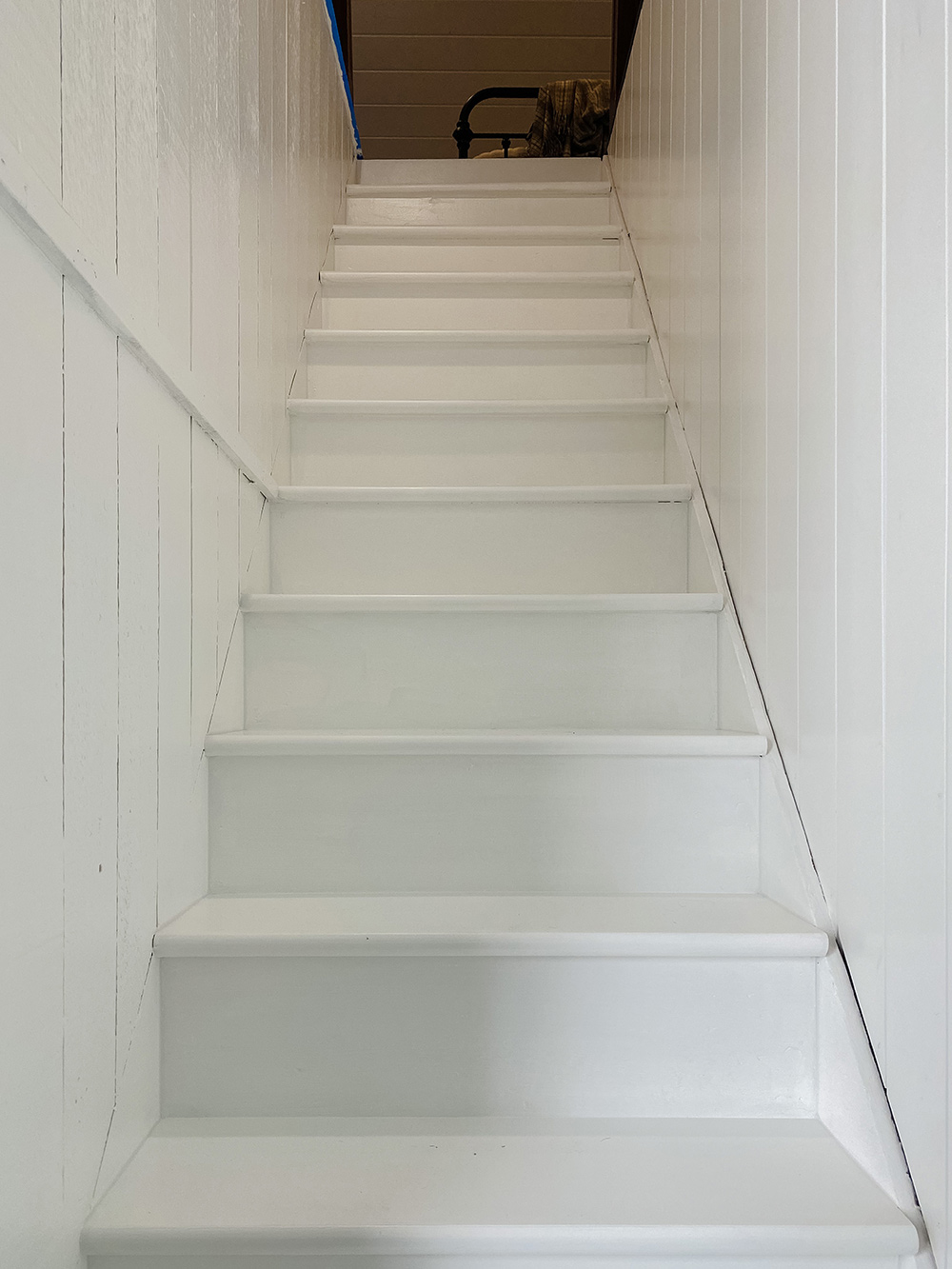
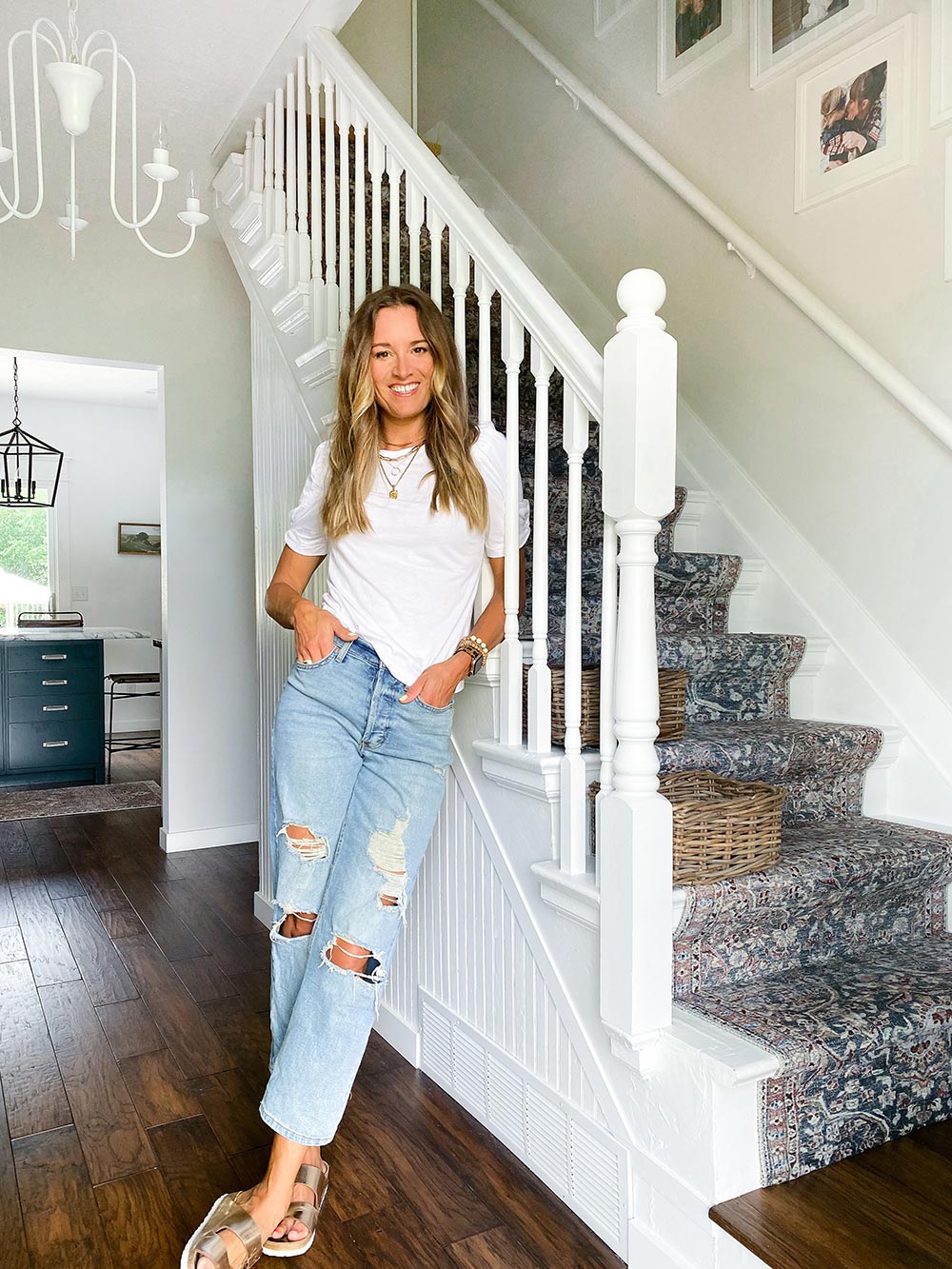
Step 4
After a second and final coat of paint, it was time to add some art to the walls! I am calling this “landscape lane” as I added this asymmetrical gallery wall of all my favorite landscape artwork I have collected throughout the years. I am so happy with how the stairs turned out, it went from dark and dingy to bright and airy. Going up and down these stairs now feels so sturdy and safe and these new stair treads are so quiet underfoot! I love a good before and after photo, and this project did not disappoint. We still need to add a railing to the wall, and I am also thinking of adding a stair runner too! Be sure to follow along with us @rignellranchfor the rest of this process!

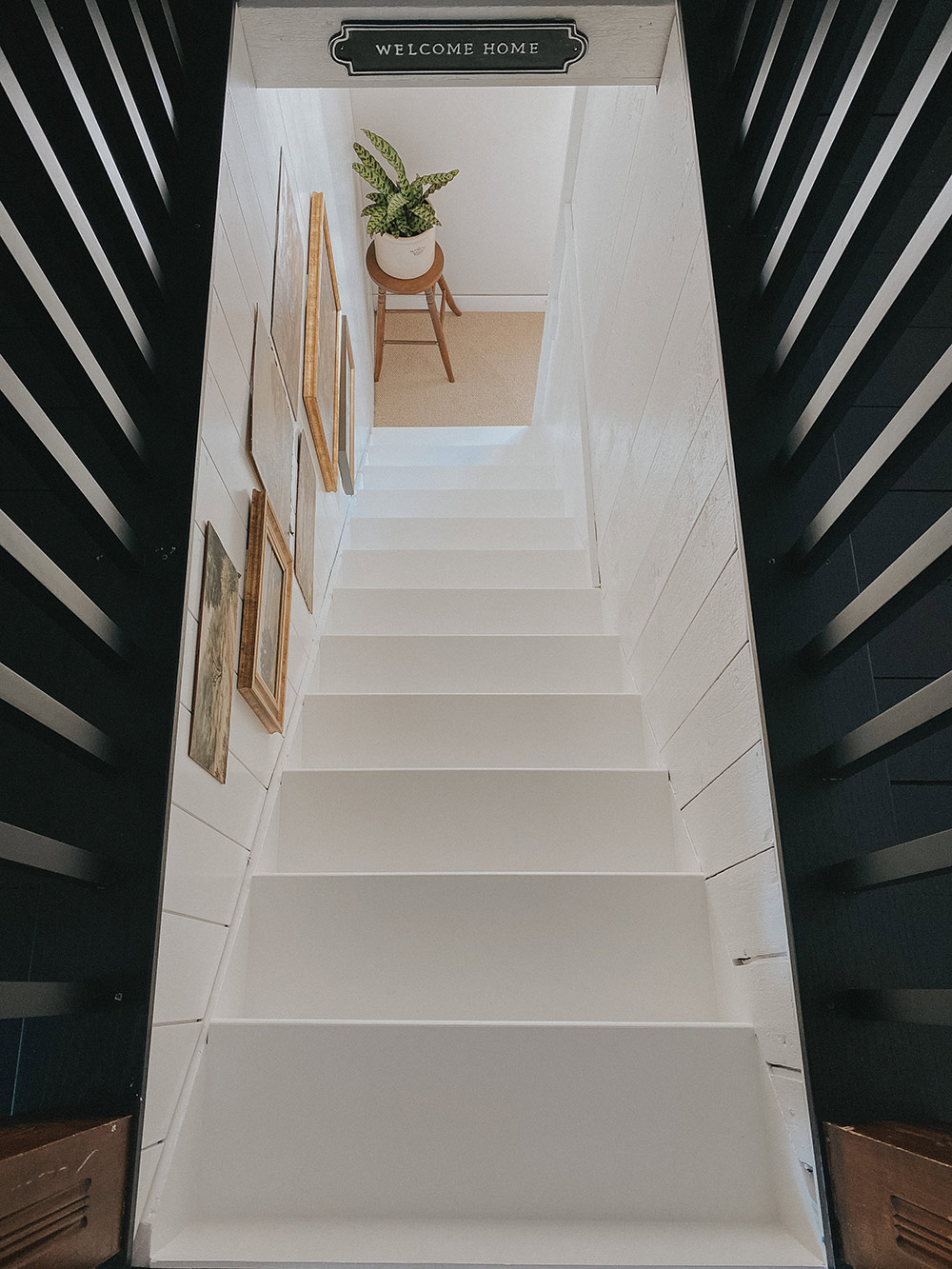
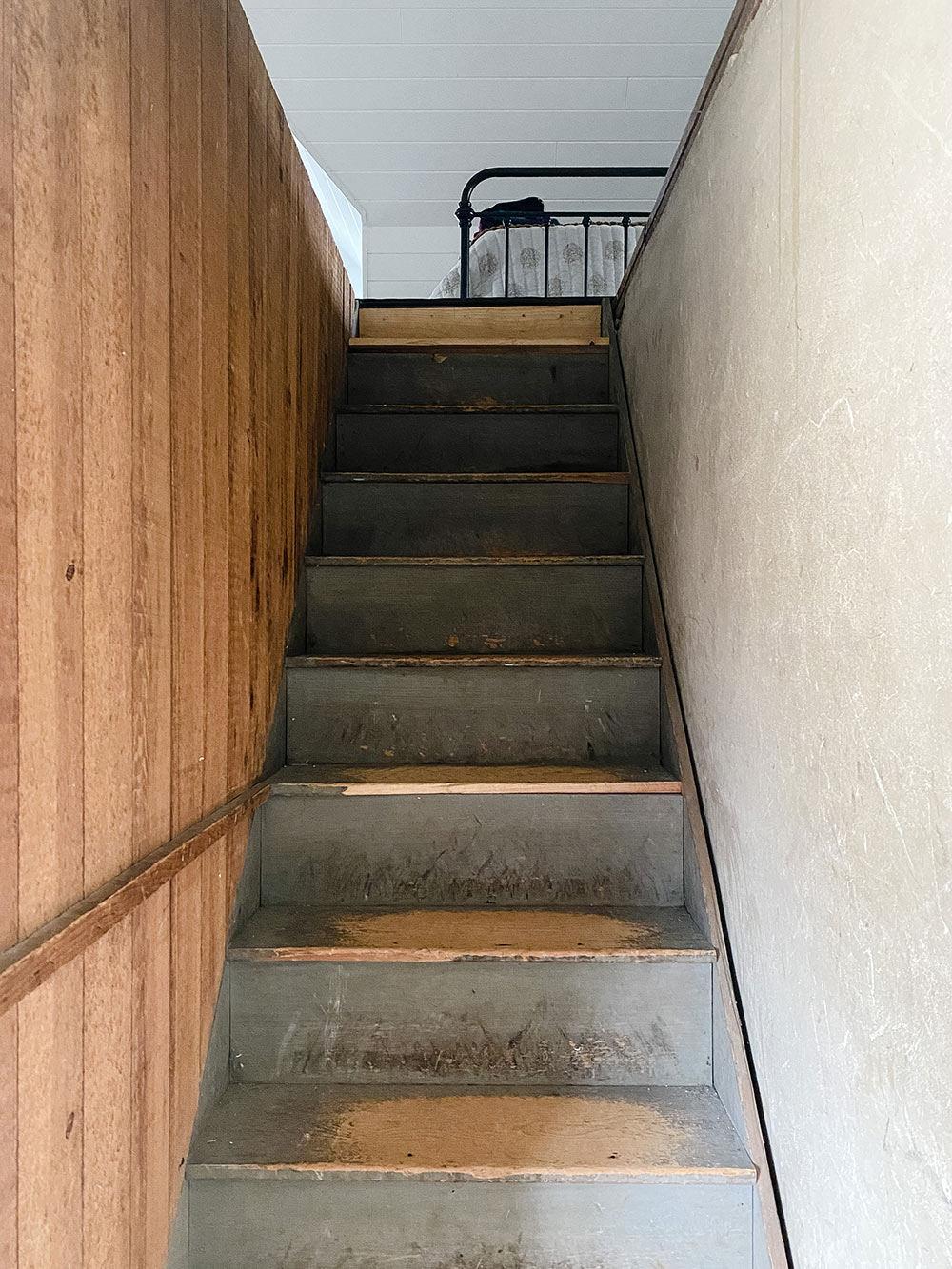

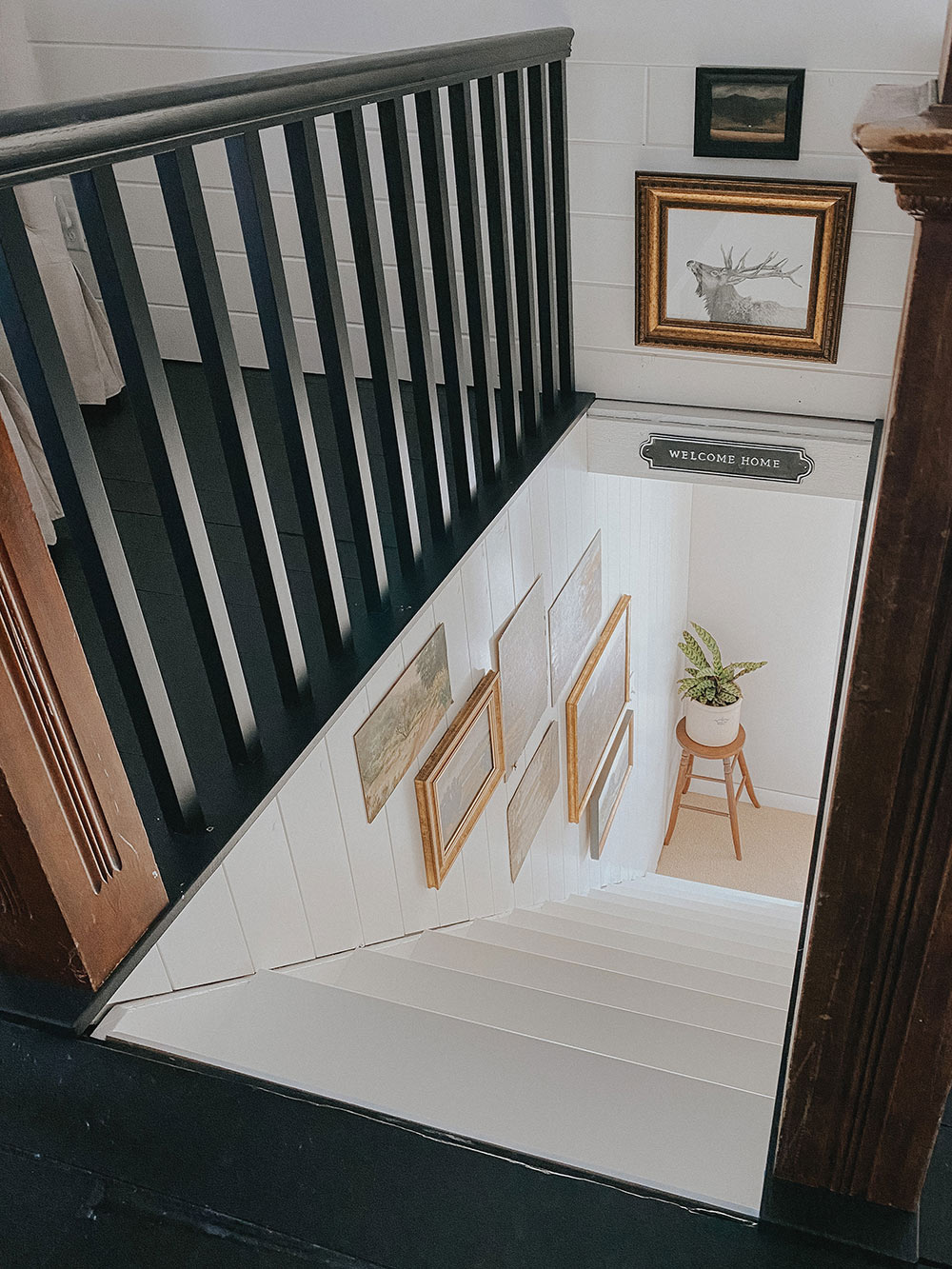
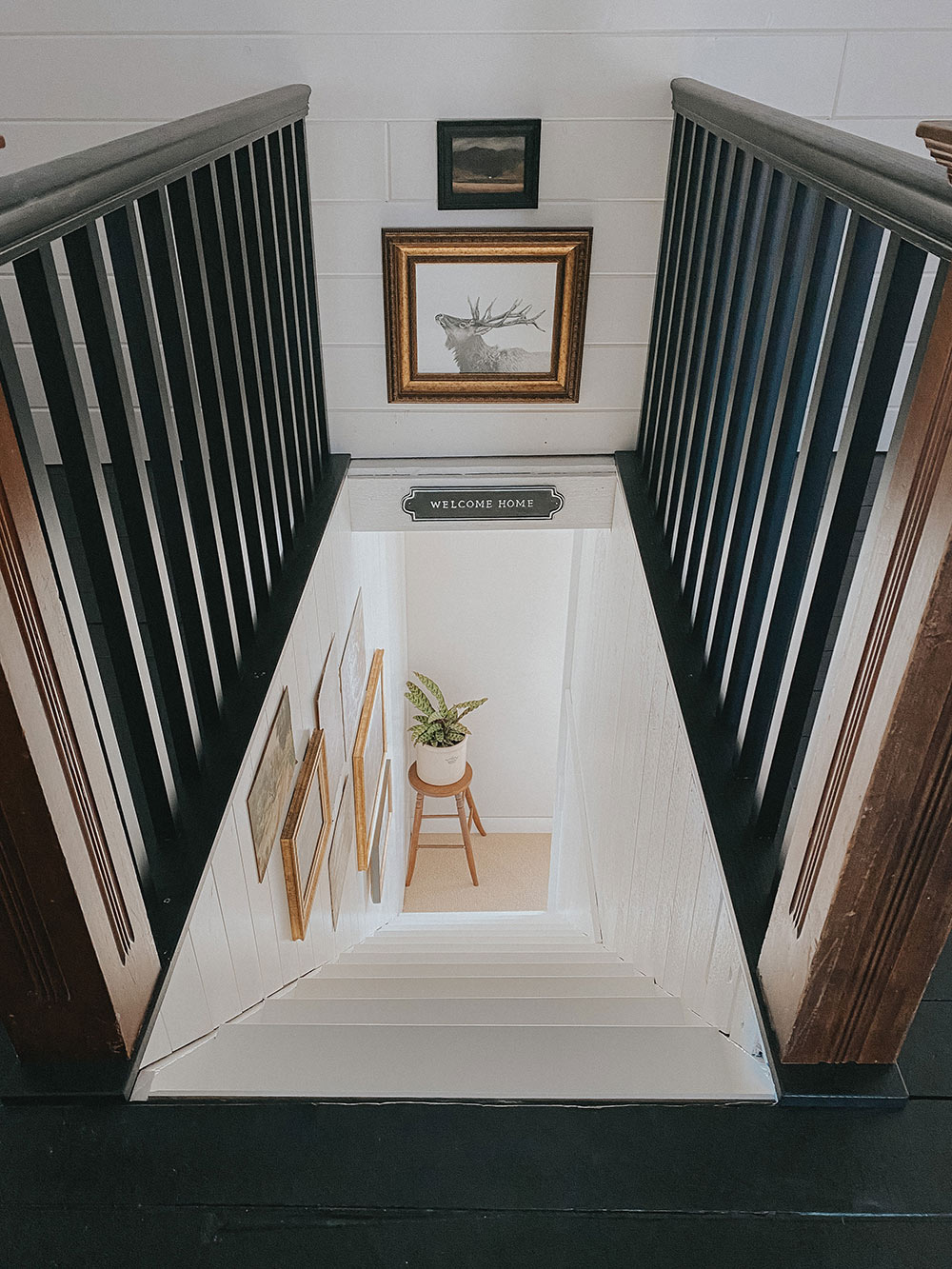
This post was created in partnership with The Home Depot. The author may have received compensation for this article and associated images or video, potentially in the form of products and/or services. All expressed opinions and experiences are the author’s own words.
